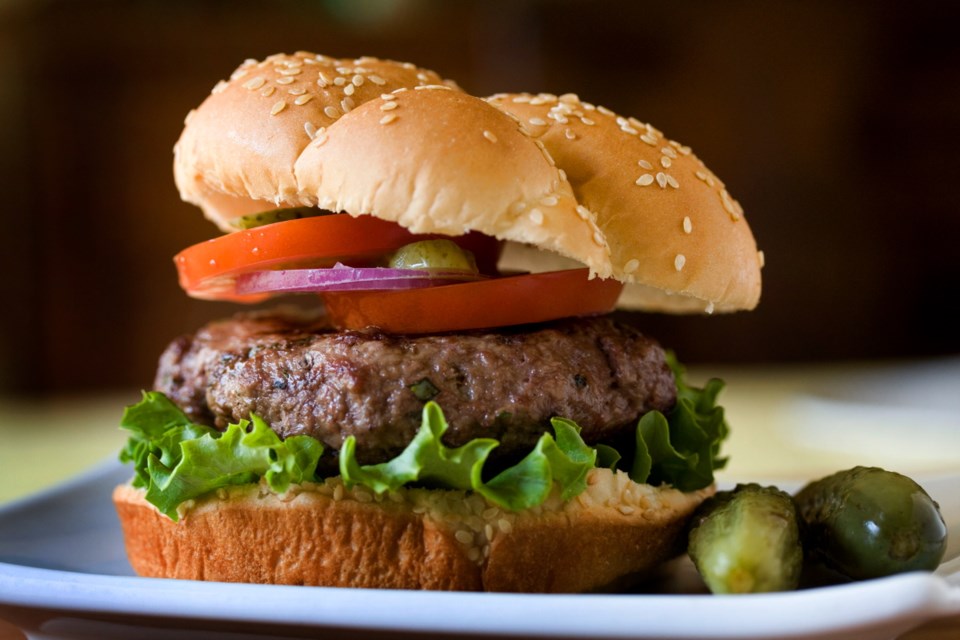 Last week, I attended the Weber Mobile Grill Academy with two Times Colonist readers, Carole Richer and Norman Thomson, who won our draw for tickets to the event.
Last week, I attended the Weber Mobile Grill Academy with two Times Colonist readers, Carole Richer and Norman Thomson, who won our draw for tickets to the event.
We, along with a bunch of other barbecue enthusiasts, watched an evening presentation that took place outside Capital Iron.
During the presentation, two Weber employees, Farhad Panahi and Jordan Lorette, who called themselves “grill ambassadors,” provided grilling tips, such as how to make the perfect hamburger, a food many Canadians will cook this long weekend. Below is advice they provided, along with some of my own.
Type of meat to use: The Weber grill ambassadors said lean ground beef, which contains up to 17 per cent fat, can yield a good patty. For a juicier one, though, they prefer to use medium ground beef, which contains up to 23 per cent fat, or more specifically, ground chuck. The latter, sold at some butcher shops and supermarkets, is meat ground from the shoulder/neck area, which is flavourful and streaked with fat.
How to flavour: The grill ambassadors said they’ve had decent burger patties that contained breadcrumbs and eggs, but those binders are not necessary when you have good ground beef.
In Weber YouTube videos I’ve watched on how to grill a burger, the meat is simply seasoned with salt and pepper. But during the academy presentation, participants got to make and flavour their own burgers with other seasonings, such as spice blends, garlic powder, Worcester sauce and grated onion. Every person at the event seasoned their patty differently and when eating their burgers, all were smiling, proving how you season does come down to personal taste.
Mixing and shaping: This was not mentioned at the Weber event, but when mixing and shaping the ground beef, you should use a gentle touch. If you vigorously mix and/or pack the meat together, you’ll compact the meat and the cooked patty could turn out tough in texture. That’s why I prefer to make patties by hand, not with a burger press.
I like to make my patties about two-centimetres thick, which is thick enough that it will sear nicely, but still be juicy in the middle, and not so thick it takes forever to cook. When they’re made, make a deep dimple in one side of the patty. The Weber grill ambassadors say that dimple will keep the burger from puffing during cooking.
How to cook: To cook our burger patties, our grill ambassadors preheated their barbecues to 600 F. When that temperature was reached, on went the burger patties, dimpled-side up, and during the process, with the barbecue lid open, the temperature dropped to 500 F. The barbecue lids were closed and the temperature inside was adjusted to stay about 500 F. The patties were cooked five minutes, and then flipped. The lids were closed again and the patties cooked five minutes more, or until the centre of the meat reached a food-safe 160 F (71 C) when checked with an instant-read thermometer.
If you want cheese on your burger, put it on now and cook one minute more. At this time, you could also warm your burger buns, by setting them cut-side-down on the grill. This cooking method worked well, yielding nicely seared, juicy patties.
Eric Akis is the author of eight cookbooks. His latest is The Great Rotisserie Chicken Cookbook (Appetite by Random House). His columns appear in the Life section Wednesday and Sunday.



